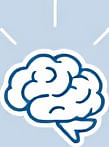Boosting Mental Energy Through Exercise Routines
 by Thaddeus Blanda
by Thaddeus Blanda
Explore practical exercise routines that help reduce mental overload and enhance energy levels. This article offers tips for students and professionals to integrate physical activity into daily life for better focus and productivity, drawing from cognitive science principles.

In our busy lives, managing mental demands can feel overwhelming. Exercise routines play a key role in easing this burden by promoting better mental energy. For instance, regular physical activity helps clear the mind and improve focus.
One way exercise routines support cognitive load offloading is by increasing blood flow to the brain. This process aids in reducing mental overload, allowing for clearer thinking. Exercise routines like brisk walking can be particularly effective for this.
Consider starting with simple activities. Walking for 30 minutes a day offers a straightforward approach to building mental energy. It encourages the release of endorphins, which in turn foster a sense of well-being.
Yoga provides another option for those seeking balance. Through gentle poses and breathing, it helps soothe the mind and body. Mental energy often improves as stress decreases, making yoga a valuable tool.
Strength training, such as lifting weights or bodyweight exercises, builds physical resilience that translates to mental benefits. This type of routine strengthens muscles and enhances endurance, which supports sustained attention during tasks.
Why Focus on Exercise for Mental Relief
Physical movement directly influences how we handle daily pressures. Research shows that consistent routines can lower levels of cortisol, a hormone linked to stress. By incorporating exercise, individuals can create space for recovery and reflection.
For students, maintaining routines during study sessions is crucial. Short breaks for physical activity, like jumping jacks, can refresh the mind and prevent fatigue. This practice helps in managing academic demands without feeling drained.
Professionals dealing with work-related stress might benefit from routines integrated into their schedules. A midday walk, for example, can break up long hours and restore mental clarity.
Practical Tips for Getting Started
Begin with achievable goals to avoid discouragement. Aim for three sessions per week, gradually increasing as comfort grows. Track progress in a journal to see improvements in energy levels.
Choose activities that align with personal interests. If outdoors appeals, opt for hiking or cycling. Indoor options like dancing or stretching can be just as effective for building routines.
Combine exercise with other habits for added benefits. Pairing a walk with listening to podcasts, for instance, turns it into a multifaceted activity that boosts both body and mind.
Pay attention to timing. Morning routines can set a positive tone for the day, while evening ones help unwind and prepare for rest. Consistency is key to seeing long-term gains in mental energy.
Real-Life Applications
Imagine a student preparing for exams. By adding short exercise routines, such as a quick run, they can maintain focus and reduce overwhelm. Cognitive load becomes easier to handle with these breaks.
For professionals in high-pressure jobs, routines like desk-based stretches offer relief without leaving the workspace. This approach ensures mental energy remains steady throughout the day.
Families can make it a group effort. Weekend outings for bike rides encourage everyone to participate, fostering shared benefits and stronger connections.
Overcoming Common Challenges
Some may face barriers like time constraints. In these cases, break routines into smaller segments, such as 10-minute sessions. This makes it feasible even on busy days.
Injury or health concerns require caution. Consult a healthcare provider before starting new activities to ensure safety and effectiveness.
Motivation can wane, so set reminders or find a partner. Sharing goals with others creates accountability and makes the process more enjoyable.
Measuring Progress
Notice changes in daily life as a sign of success. Improved sleep, better mood, and increased productivity are common outcomes. Keep notes on these shifts to stay encouraged.
Over time, routines become second nature, leading to sustained mental energy. This transformation supports overall well-being and productivity.
In summary, adopting exercise routines is a practical step toward reducing mental overload. By prioritizing physical health, individuals can enhance their ability to thrive in various settings.
